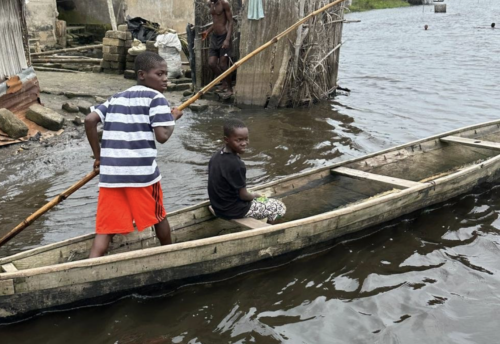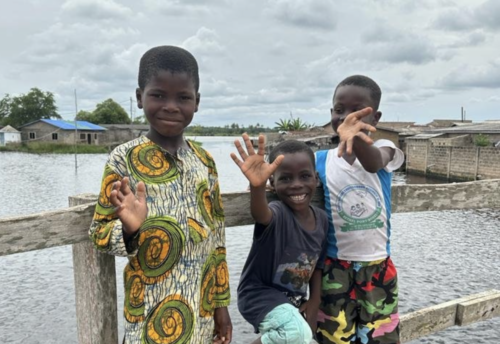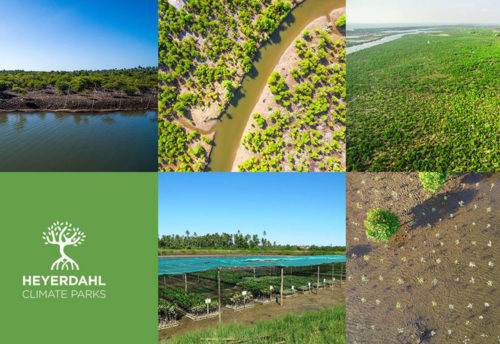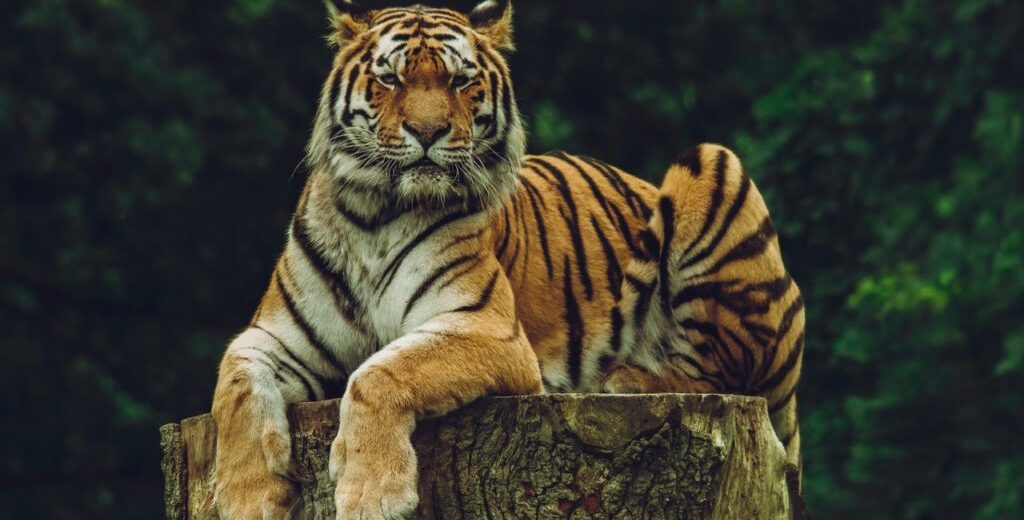
To celebrate the United Nations World Oceans Day on 8th June 2021, EcoFriend World in partnership with Worldview Impact Foundation launched the Eric Bremley Lyngdoh Earth Tiger Climate Park to highlight the theme of Ocean: Life and Livelihoods. Together they are restoring 300,000 mangrove trees in the Sundarbans of India in West Bengal to fight climate change by creating sustainable livelihoods for the small and marginal farmers living around these swamps while protecting the habitat of the endangered Royal Bengal Tiger. This special climate park has been created to honour Eric Bremley Lyngdoh from Meghalaya northeast India who was born in the year of the Earth Tiger and who inspired the ecosystem restoration projects of Worldview Impact Foundation and the creation of Spring Valley Farm in Meghalaya, India. EcoFriend World has teamed up with Avatars For a Cause to scale up this mangrove restoration campaign in the Sundarbans of India to plant 3 million trees and protect the habitat of the Royal Bengal Swamp Tigers.
With one million animal and plant species on the brink of extinction, the need to restore and sustain biodiversity has never been greater. The current pandemic has proven just how fragile we are as a species when one thing falls out of balance.
The Sundarbans are the largest mangrove forests on Earth and are shared between India and Bangladesh. They play a vital role in shielding coastal communities from storms and floods intensified by climate change, like the super cyclone Amphan that struck both countries in May 2020 and cyclone Yaas that struck India in May 2021. The 4000 hectares of restored grown mangroves acted as a storm bio-shield, helping to absorb some of the impacts of the up to 265 kilometres per hour winds, and preserving the banks from flooding and desalination. They remain intact after the devastating tropical storm, with no uprooted trees.

Let us share with you a little about the unique power of mangroves and why we’ve chosen to restore mangrove ecosystems in India.
1. Mangroves sequester carbon at 5-fold the rate of terrestrial trees
2. Mangroves provide habitat to support rich biodiversity, including the endangered Royal Bengal Tiger
3. Mangroves pump oxygen into our atmosphere
4. Mangroves protect coastlines and coastal communities from storm surges and other extreme weather events.
Not surprisingly, mangrove restoration is an excellent regenerative investment with far-reaching environmental and social benefits, as well as contributing to the United Nations Sustainable Development Goals (SDG’s).
Oceans store the largest amount of carbon in the world, and the shorelines via mangroves, seagrasses and coral reefs, make up a significant proportion of that important storage function. After mangroves are restored, the surrounding seagrasses recover, and these two climate action superheroes combine forces to sequester what is known as ‘Blue Carbon’ (carbon stored in the oceans and coastal ecosystems). These critical ecosystems provide fish and crustacean spawning grounds that facilitate the transport of nitrogen run-off into fish nitrogen protein, which is then transported into deep oceans via fish migration, contributing to a massive carbon sink into the depths of the oceans. The carbon and fish migration life cycle is complete when mangroves and seagrasses are thriving.
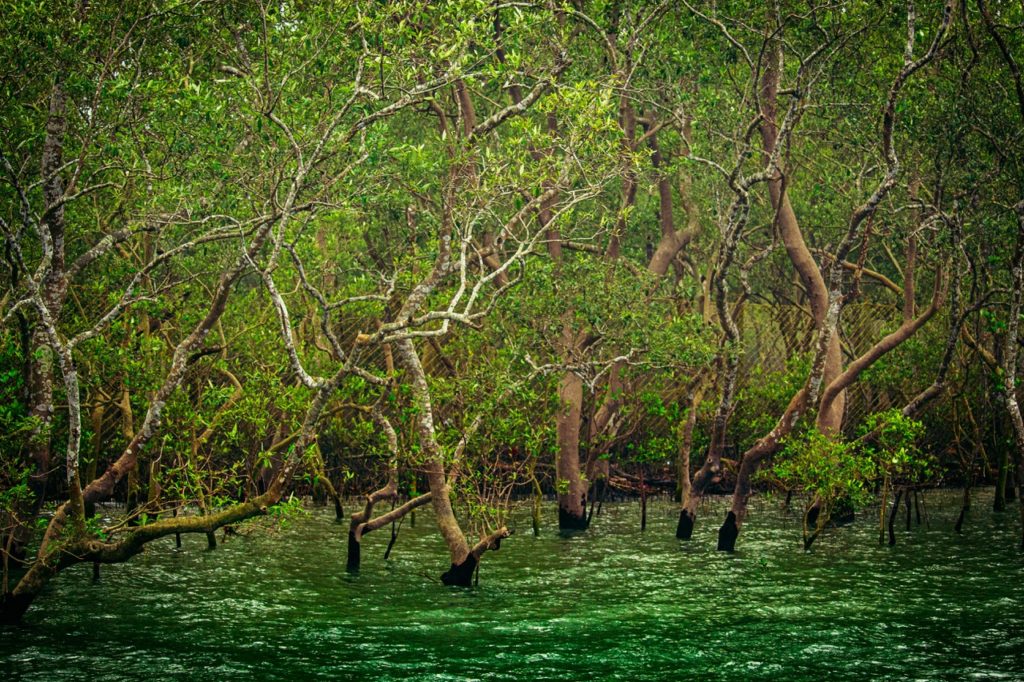
20-50 billion mangroves (when taking seagrass recovery into account) is equivalent to 1 trillion terrestrial trees in terms of carbon drawdown. So a global effort to halt climate change would require up to 50-fold less trees than the proposed 1 trillion tree target from the ETH Zurich study. Restoring 20-50 billion mangroves could provide us with about 15 years extra time to draw down our emissions and reduce our ecological footprint in order to mitigate climate change. It’s a lot of mangroves, for sure, yet the Worldview Impact Foundation team demonstrated that drone tree planting could achieve 100,000 trees per day in Myanmar. It’s a message of great hope to know that we could buy ourselves that kind of time to address our most pressing climate-related issues. Ultimately hand-based tree planting is more accurate for survival rates now, but drone technology will improve over time.
Mangrove ecosystems are vital for the survival of many species on our planet, like the Royal Bengal Tiger, that have adapted to survive in the saltwater swamps of the Sundarbans. Tigers serve as apex predators within their ecosystem, feeding on fish living amongst the mangrove roots, hunting underwater – a highly unusual adaptation for big cats. This keystone species requires large, interconnected territories for prey abundance. Bengal Tigers are an endangered species, with only between 2000-3000 individual animals today in South Asia. Without sufficient mangrove habitat, tigers are pushed closer to extinction, and without tigers, entire ecosystems would collapse.
Watch this video from the BBC’s Big Cat series to get a sense of both the rarity and majesty of the Royal Bengal Tiger. EcoFriend World in partnership with Worldview Impact Foundation is proud to support the communities who are working to restore and protect these tiger habitats in the Sundarbans for generations to come.
Mangroves are under threat globally due to land conversion, overexploitation, and other human-induced stressors. Various stakeholders, including governments and NGOs, have been working on the conservation and restoration of mangrove ecosystems for years with mixed results. Lack of sustainable finance is often cited as a reason for long-term project failure. Hence the opportunity arises for mangrove capital to lead the way in regenerative finance.
Mangroves provide valuable ecosystem services estimated to be worth tens of thousands of USD per hectare, and play an important role in climate change mitigation and adaptation. Through regenerative investment mangroves can deliver a number of environmental and social benefits. This is of great interest to both governments wanting to reduce coastal damage and increase economic livelihoods, and impact investors wanting to ‘do good’ while earning economic returns based on valuation of natural capital.
In September 2015, 193 countries adopted the 2030 Agenda for Sustainable Development – a roadmap to alleviate global poverty, advance social and economic development and importantly, further the integrated management of natural systems. The importance of restoring and protecting mangroves as a low carbon investment is reflected most clearly in Sustainable Development Goal (SDG) 14, which focuses on sustainably governing our oceans and coasts and recognises mangroves’ immense value to local communities. But restoring mangrove forests also supports the achievement of many other SDGs, including eliminating poverty and hunger (SDG 1 and SDG 2), ensuring livelihoods and economic growth (SDG 8), taking actions against climate change impacts (SDG 13) and halting biodiversity loss (SDG 15).
As we enter the United Nations Decade on Ecosystem Restoration 2021-2030, addressing climate change provides a significant opportunity for a green recovery. Regenerating degraded ecosystems creates green jobs with respectable wages, safeguards biodiversity, and provides food security and water supply.

